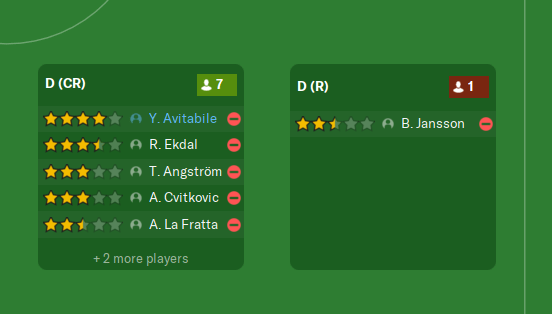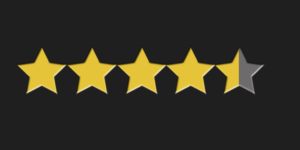
Always Be Upgrading
 I try never to buy backups.
I try never to buy backups.
That is, I never want to buy a lesser player than one I’ve already got, to serve as a backup. I didn’t realise until recently that this was an unusual thing. Whenever I recognise the need for a backup, I begin looking for a better player than who I already have. The idea is that the new player becomes the regular, and the current player becomes the backup. This works particularly well when you’re climbing the leagues. When you’re doing this, you should always be upgrading. The advantage is obvious: you end up with successively better players, while maintaining squad depth at all times.
In order to facilitate this method, I use youth players as fill-ins. I’ll search through youth for anyone who looks like they could play the threadbare position in our league. They get the rotation seat on the bench until I find my upgrade. Then they either go back to the youth side or take over as the backup if they’re good enough. The old player then is either the new backup, or gets sold or loaned out.
Quick side note: when I talk about stars below, I’m not talking about the ones your coaches suggest, or scouts. I mean your own gut feeling about current ability: where you would place them in the depth chart.
But What If…
Now you may be thinking: “Sure, but if I’ve got a 4.5* player at right back, I’m not going to look for a 5* to be an upgrade!” This is a good point, well done for thinking of it. In this case, where the existing player is four-star or better – an always starter – I will search for a young prospect who can back him up. But, that prospect must have the potential to be better in the long run than the existing player. Always Be Upgrading.
case, where the existing player is four-star or better – an always starter – I will search for a young prospect who can back him up. But, that prospect must have the potential to be better in the long run than the existing player. Always Be Upgrading.
Specifically, when I do buy a youngster as long-term replacement, I want one who can hold his own immediately. So a good 2* or better. And one whose upside is greater than the existing high-quality player. The combination of regular play and training with the first team should help the young player develop nicely. And when they’re ready to take over, you can sell on the older player for a tidy profit.
The reason I fell into this pattern to Always Be Upgrading is that I habitually rotate my squads for fitness. I won’t generally start a player who isn’t at 90% condition or better, unless I’ve really no choice. In any given game, then, two or three of the players will not be from the “first XI”, such as it is. Those players must always be able to step in and take up the full-time burden if there’s an injury or suspension.
So I got into the habit of always comparing the new players I’m buying to the players I already have, and only hitting Confirm on the transfer if I can see a noticeable improvement. So I’m almost never looking for a backup – I’m looking for an upgrade, short-term or long-term, on what I have.
Okay, But What Will This Cost Me?
What would adopting this mean to your save? At a guess, I’d say it adds a fair bit of time spent looking through scouting reports, weeding out the injury-prone, big-game-terrified, inconsistent players, before doing direct comparisons between existing and prospective players. It is definitely time-consuming, and you spend a lot of time looking at duds. That’s not a lot of fun. But it will also definitely improve your team over time, especially when climbing the leagues.
When climbing the leagues, you want to check the scout reports for the big star icon, which will tell you what level the player is operating at. If you’re climbing, obviously, you want the ones that will be able to play at a higher level, so you’ve got a headstart on the next level up. L![]() ook for the star on a bright green background, that’s the icon you want.
ook for the star on a bright green background, that’s the icon you want.
You may have thought, by now, that this will cost a lot of money. I don’t agree. This is why I say it takes a LOT of scouting, by which I mean you looking at screens of attributes and scout reports. You can find the bargains by a host of established methods within the game: know the release dates for different parts of the world, know the transfer windows, scan the international U-21 sides, et c, et c. All the usual tricks for where you find good talent.
Conclusion
With the personal rules I play under – we all have them, don’t we? – I don’t look at lists of wonderkids. For me, the scouting system is the only way to find players. I would imagine that if you were the sort to use other people’s scout work, then being able to access that info would make this strategy (Always Be Upgrading) more viable. That’s kind of why I don’t use other people’s scouting, but maybe you don’t have as much time as I do to play, and need to use the shortcut. No judgement! All I’m saying is, if you do, you’ll find this strategy much easier to implement.
In the end, this strategy is about a mindset. I don’t ever want to be backfilling, I want to be building new on top of the old, making a better team all around, every time I make a purchase. People often ask me how I have success playing. This is one of the key elements: Always. Be. Upgrading.
Here are some other articles you may enjoy:
- Players are People too
- How to Get a Head Start in Football Manager
- 5 Ways to Improve Your Game in Football Manager
Follow us on social media: